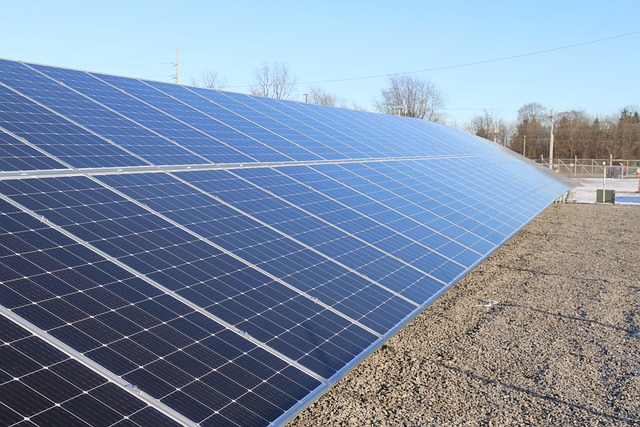The Science Behind Green Energy: Understanding Its Impact on Climate Change
In recent years, the world has witnessed a significant shift towards green energy sources, driven by the urgent need to address climate change and its far-reaching consequences. This article dives deeply into the scientific principles underpinning green energy, exploring its various forms, the mechanisms by which it counters climate change, and the overall impact on our planet’s future.
What is Green Energy?
Green energy refers to energy produced from renewable and sustainable sources that have minimal impact on the environment. Unlike fossil fuels, which release harmful greenhouse gases when burned, green energy harnesses natural processes that replenish themselves naturally over time. Common forms of green energy include solar, wind, hydroelectric, geothermal, and biomass energy.
Understanding Climate Change
Climate change is an intricate phenomenon driven primarily by the increase of greenhouse gases (GHGs) in the atmosphere, such as carbon dioxide (CO2), methane (CH4), and nitrous oxide (N2O). These gases trap heat, leading to a gradual rise in global temperatures—a process known as the greenhouse effect.
Human activities, particularly the burning of fossil fuels for energy, deforestation, and industrial processes, have significantly contributed to the imbalance of GHGs in the atmosphere. The consequences are profound: rising sea levels, extreme weather events, loss of biodiversity, and disruption of ecosystems.
Mechanisms of Green Energy
Green energy works on various scientific principles, each contributing uniquely to a sustainable energy future. Below are some of the primary mechanisms behind the popular green energy sources:
Solar Energy
Solar energy harnesses sunlight to generate electricity or heat. Through photovoltaic (PV) cells, sunlight is converted into electrical energy. When light photons strike the solar cells, they dislodge electrons, creating a flow of electricity. This process not only provides a renewable energy source but also helps reduce reliance on fossil fuels.
Wind Energy
Wind energy converts kinetic energy from wind into mechanical power using wind turbines. As wind passes through the turbine blades, it turns them, which in turn drives a generator that produces electricity. Wind energy is one of the cleanest forms of energy, producing no emissions or pollution during operation.
Hydroelectric Energy
Hydroelectric energy utilizes flowing water to generate electricity. By constructing dams on rivers, water is stored in reservoirs and released to flow through turbines, generating power. This method is highly efficient and provides a steady energy supply. However, large hydroelectric projects can disrupt local ecosystems, a consideration that must be addressed during planning.
Geothermal Energy
Geothermal energy exploits heat from within the Earth. In regions with volcanic activity, hot steam or hot water can be extracted from the ground and used to generate electricity or for direct heating purposes. This energy source is stable and reliable, contributing to energy resilience.
Biomass Energy
Biomass energy converts organic materials such as plant and animal waste into usable energy. Through processes such as combustion or anaerobic digestion, biomass can produce heat, electricity, and biofuels. While biomass is considered renewable, its sustainability depends on the management of resources and emissions produced during processing.
Impact of Green Energy on Climate Change
Transitioning to green energy is critical in combating climate change. The environmental benefits are numerous and multifaceted. Here are some of the most significant impacts:
Reduction of Greenhouse Gas Emissions
The primary advantage of green energy is its ability to reduce GHG emissions. By replacing fossil fuels with renewable alternatives, we can significantly decrease the amount of carbon dioxide and other harmful gases released into the atmosphere. This reduction is vital for meeting international climate goals and for stabilizing global temperatures.
Promoting Sustainable Development
Green energy supports sustainable development by providing access to clean and safe energy sources. This can be particularly impactful in developing nations, where many communities still rely on traditional biomass for cooking and heating. Introducing renewable energy solutions can improve health outcomes, reduce air pollution, and create job opportunities.
Enhancing Energy Security
Green energy diversifies energy sources, reducing dependence on imported fossil fuels. This enhances national energy security, making countries less vulnerable to geopolitical tensions and market fluctuations. By investing in local renewable resources, nations can also stimulate their economies through job creation within the green energy sector.
Encouraging Technological Innovation
The shift towards green energy fosters technological advancements. The race to improve efficiency in solar panels, wind turbines, and other renewable technologies has led to significant innovations, making these sources more accessible and affordable. Research and development in energy storage solutions, such as batteries and hybrid systems, further enhance the effectiveness of renewable energy.
Challenges to Green Energy Adoption
Despite the numerous benefits associated with green energy, there are challenges that hinder its widespread adoption:
Intermittency and Reliability
Renewable energy sources such as solar and wind are intermittent, relying on natural conditions to generate electricity. This variability can lead to reliability issues in energy supply. However, advancements in energy storage technologies, such as batteries and grid management systems, are helping to address these challenges.
Initial Cost of Investment
The initial financial outlay for green energy projects can be substantial. While the long-term benefits and savings are clear, securing funding for the upfront costs can be a barrier, particularly in developing regions. Governments and investors play a critical role in providing incentives and support for transitioning to renewable systems.
Infrastructure and Policy Barriers
Many existing infrastructures are designed for traditional fossil fuels. Retrofitting these systems to accommodate renewable energy can be complex and costly. Additionally, policy frameworks must evolve to support green energy transitions, emphasizing regulations that promote sustainability, incentives for renewable energy production, and substantial investment in research and development.
The Role of Individuals and Communities
The transition to green energy is not solely a responsibility of governments and industries; individuals and communities can also play vital roles:
Energy Efficiency and Conservation
Individuals can contribute to reducing energy consumption by adopting energy-efficient appliances, utilizing smart technologies, and engaging in conservation practices. By minimizing waste, households can effectively lower their energy footprint and encourage broader community efforts towards sustainability.
Supporting Local Renewable Initiatives
Communities can foster local renewable initiatives such as community solar projects or local wind farms. By investing in these initiatives, citizens promote self-sufficiency in energy production and contribute to the energy transition within their regions.
Advocacy and Education
Public advocacy for green policies and increased education about renewable energy are essential for cultivating an environmentally conscious society. Raising awareness about the benefits and importance of green energy can drive demand and influence policy changes that propel society towards sustainability.
The Future of Green Energy
The future of green energy is promising, with ongoing advancements in technology and a growing societal push for sustainability. As environmental challenges escalate, there is an increasing recognition of the importance of transitioning to renewable energy sources. By continuing to invest in research, infrastructure, and education, we can work towards a sustainable future that mitigates climate change and protects our planet.
Green energy represents a hopeful avenue toward reversing the trajectory of global warming and ushering in an era of environmental stewardship. Through collective efforts and innovative solutions, humanity can address the challenges of climate change and create a sustainable world for future generations.










